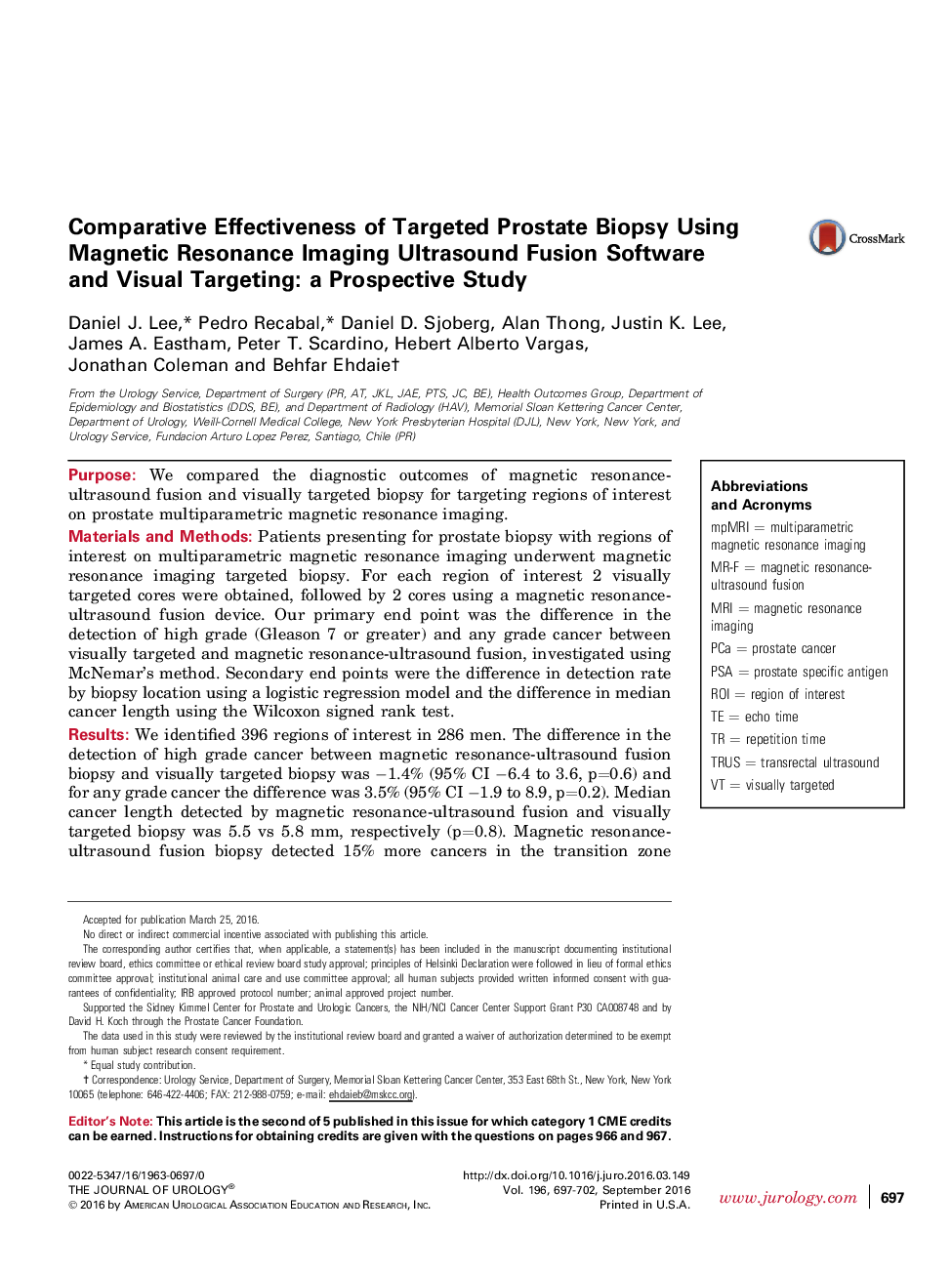| Article ID | Journal | Published Year | Pages | File Type |
|---|---|---|---|---|
| 3857831 | The Journal of Urology | 2016 | 6 Pages |
PurposeWe compared the diagnostic outcomes of magnetic resonance-ultrasound fusion and visually targeted biopsy for targeting regions of interest on prostate multiparametric magnetic resonance imaging.Materials and MethodsPatients presenting for prostate biopsy with regions of interest on multiparametric magnetic resonance imaging underwent magnetic resonance imaging targeted biopsy. For each region of interest 2 visually targeted cores were obtained, followed by 2 cores using a magnetic resonance-ultrasound fusion device. Our primary end point was the difference in the detection of high grade (Gleason 7 or greater) and any grade cancer between visually targeted and magnetic resonance-ultrasound fusion, investigated using McNemar’s method. Secondary end points were the difference in detection rate by biopsy location using a logistic regression model and the difference in median cancer length using the Wilcoxon signed rank test.ResultsWe identified 396 regions of interest in 286 men. The difference in the detection of high grade cancer between magnetic resonance-ultrasound fusion biopsy and visually targeted biopsy was −1.4% (95% CI −6.4 to 3.6, p=0.6) and for any grade cancer the difference was 3.5% (95% CI −1.9 to 8.9, p=0.2). Median cancer length detected by magnetic resonance-ultrasound fusion and visually targeted biopsy was 5.5 vs 5.8 mm, respectively (p=0.8). Magnetic resonance-ultrasound fusion biopsy detected 15% more cancers in the transition zone (p=0.046) and visually targeted biopsy detected 11% more high grade cancer at the prostate base (p=0.005). Only 52% of all high grade cancers were detected by both techniques.ConclusionsWe found no evidence of a significant difference in the detection of high grade or any grade cancer between visually targeted and magnetic resonance-ultrasound fusion biopsy. However, the performance of each technique varied in specific biopsy locations and the outcomes of both techniques were complementary. Combining visually targeted biopsy and magnetic resonance-ultrasound fusion biopsy may optimize the detection of prostate cancer.
